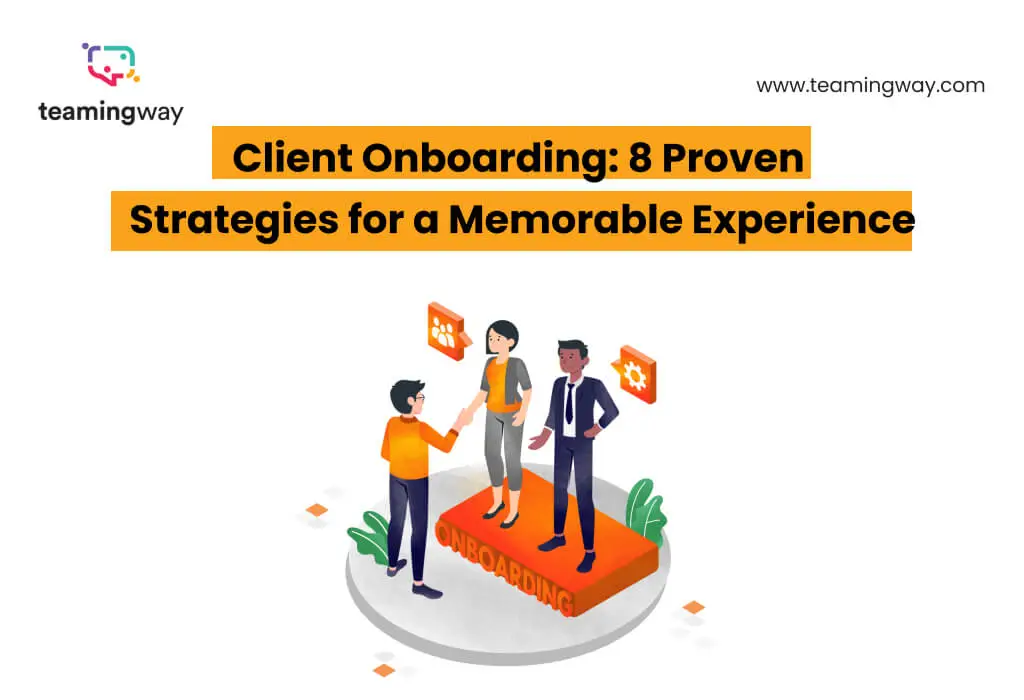
When It Comes To Client Onboarding
The first impression is crucial. It sets the tone for the entire client relationship and can determine whether they become a loyal customer or move on to your competition. To ensure a memorable and successful client onboarding experience, businesses must employ proven strategies.

Eight Effective Strategies For Client Onboarding
In this blog post, we will explore eight effective strategies for client onboarding that will leave a lasting impression. These strategies are designed to optimize the client onboarding process, enhance customer satisfaction, and build long-term relationships.
1. Develop a Comprehensive Onboarding Plan
A well-structured onboarding plan is the foundation of a successful client onboarding process. Start by clearly defining the objectives and goals for each client. Tailor the plan to suit the specific needs and expectations of your clients, considering factors such as their industry, size, and unique requirements. An effective onboarding plan should outline the steps, milestones, and timeline for the onboarding process, ensuring a smooth and efficient transition.
2. Assign a Dedicated Onboarding Team
Assigning a dedicated onboarding team is crucial to providing personalized attention and support to new clients. This team should consist of individuals with in-depth knowledge of your products or services, as well as excellent communication and problem-solving skills. Having a dedicated team ensures that clients feel valued and receive prompt assistance throughout the onboarding journey. Regular communication and proactive engagement with the client during this phase help build trust and foster a positive working relationship.
3. Streamline Documentation and Processes
Simplify the onboarding process by minimizing paperwork and automating repetitive tasks. Provide clients with a user-friendly online portal or software platform where they can easily access and submit necessary documents. Emphasize the importance of clear communication and provide detailed instructions to guide clients through the required steps. Streamlining documentation and processes not only saves time but also demonstrates your commitment to efficiency and customer-centricity.
4. Offer Comprehensive Training and Resources
Empower your clients by offering comprehensive training and resources that enable them to make the most of your products or services. Conduct interactive training sessions, and webinars, or provide video tutorials that address common questions and showcase the key features and benefits of your offerings. Additionally, create a knowledge base or FAQ section on your website to provide self-help resources that clients can refer to at any time. This approach ensures that clients feel supported and equipped to succeed from the start.

5. Personalize the Onboarding Experience
Personalization is a powerful way to create a memorable client onboarding experience. Take the time to understand each client’s unique requirements and preferences. Tailor your communication, training, and resources to align with their specific needs. Address clients by their names, provide relevant examples, and customize your recommendations based on their industry or goals. This personalized approach makes clients feel valued and demonstrates your commitment to their success.
6. Set Clear Expectations and Milestones
Transparency and clear communication are vital during the onboarding process. Clearly define the expectations and milestones for both parties involved. Clearly communicate what clients can expect from your company, including the timeframe for implementation, support availability, and any potential challenges they may face. By managing expectations and keeping clients informed, you reduce misunderstandings and foster a sense of trust and reliability.
7. Establish Ongoing Communication Channels
Client onboarding is not a one-time event but an ongoing process. Establish effective communication channels that allow clients to reach out to you easily. This can include a dedicated account manager, a support ticketing system, or a customer portal. Regularly check in with clients to gather feedback, address concerns, and provide additional support as needed. Consistent and proactive communication helps build strong client relationships and ensures their satisfaction.
8. Solicit Feedback and Continuously Improve
Feedback is invaluable for improving your client onboarding process. Actively seek feedback from clients at various stages of the onboarding journey to understand their experience and identify areas for improvement. Implement surveys, and feedback forms, or conduct one-on-one interviews to gather their insights. Analyze the feedback received and identify patterns or common pain points. Use this information to make data-driven decisions and enhance your onboarding process accordingly. By consistently seeking feedback and making iterative improvements, you demonstrate your commitment to delivering an exceptional client experience.
Conclusion
A successful client onboarding process is essential for building strong, long-term relationships and ensuring customer satisfaction. By implementing the eight proven strategies discussed in this blog post, you can create a memorable onboarding experience that sets the foundation for a successful partnership.
By optimizing your client onboarding process, you not only increase customer satisfaction but also enhance your company’s reputation and foster client loyalty. A positive onboarding experience sets the stage for a productive and long-lasting relationship with your clients, ultimately contributing to your business’s growth and success.
Implement these strategies, adapt them to fit your unique business needs, and continuously evaluate and improve your onboarding process. By doing so, you can create a remarkable client onboarding experience that differentiates you from your competitors and leaves a lasting impression on your clients.









